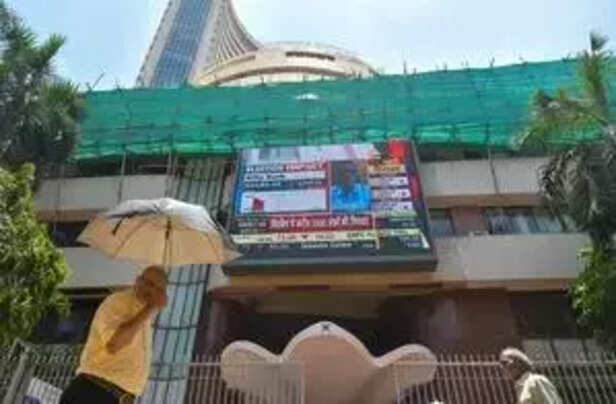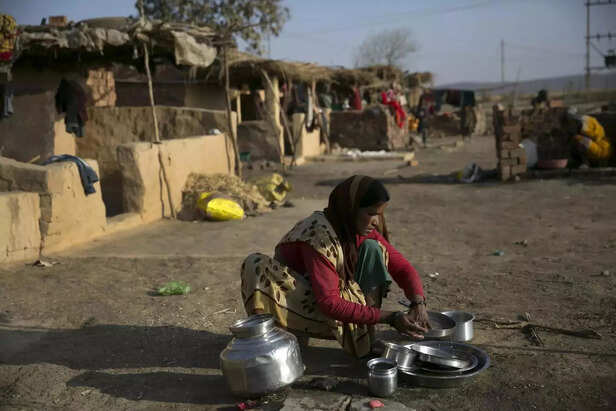4th Largest Economy, But Not 4th in Quality of Life — What This Means for India
Nidhi | Jun 02, 2025, 18:47 IST
( Image credit : Times Life Bureau, Timeslife )
India has become the world’s 4th largest economy, overtaking Japan with a GDP nearing $4 trillion. But this headline achievement hides a deeper question: has life actually improved for most Indians? From stagnant wages to poor public services, this article explores why rapid GDP growth doesn’t always translate into better living conditions — and what India must fix to turn economic strength into real national well-being.
India has crossed a major milestone on the global economic map. With a projected GDP of over $4 trillion in 2025, the country is set to overtake Japan and become the 4th largest economy in the world. This projection, backed by the IMF and the Finance Ministry, reflects India's growing influence in global markets — a sign of rising ambition, expanding trade, and strategic policy reforms.
But there’s a deeper, more uncomfortable truth: GDP is growing, but daily life isn’t improving at the same pace for millions. India’s rise in numbers is not necessarily mirrored in the lived experiences of its people. This is the paradox of modern India — economic scale without equitable social progress.




India’s rise to become the world’s 4th largest economy is a powerful marker of its global economic relevance. But the truth is more complex: GDP is a measure of output, not well-being. It tells us how much the economy produces, not how fairly it is shared — or how meaningfully it improves people’s lives.
An economy can grow while its children remain malnourished, its education system underfunded, and its working class stuck in informal, insecure jobs. India’s growth story is real, but so is the growing gap between headline progress and everyday reality.
To be truly great, India must not just be richer — it must be more just, more equal, and more humane. Until that happens, the title of “4th largest economy” will be impressive — but also incomplete.
Explore the latest trends and tips in Health & Fitness, Travel, Life Hacks, Fashion & Beauty, and Relationships at Times Life!
But there’s a deeper, more uncomfortable truth: GDP is growing, but daily life isn’t improving at the same pace for millions. India’s rise in numbers is not necessarily mirrored in the lived experiences of its people. This is the paradox of modern India — economic scale without equitable social progress.
1. India’s Economic Size Is Growing, But Income Per Person Is Still Low
- India’s GDP in FY25 reached $3.9 trillion, and is expected to cross $4.2 trillion in FY26 (IMF).
- But its GDP per capita is just $2,610, ranking around 138th globally (World Bank, 2024) — far behind countries like Brazil ($10,400) or China ($12,800).
- This means the wealth being generated is not widely distributed or reaching households proportionately.
2. Private Consumption Drives Growth, Yet Rural Demand Is Fragile

Strong GDP growth reinforces India’s position as fastest-growing major economy.
( Image credit : IANS )
- Private consumption contributes nearly 60% to India’s GDP.
- While growth has resumed due to a strong rabi harvest and tax relief, real rural wages have remained stagnant over the last 5 years (RBI & NSSO).
- The urban–rural consumption divide remains high, with top urban households spending 5x more per capita than the rural bottom 50%.
3. India Exports Services Efficiently, But They Employ Too Few

Global economic growth
( Image credit : IANS )
- Services exports (especially IT) have touched $340+ billion in FY24.
- However, this sector employs only around 3–4% of India’s total workforce, mostly skilled and urban.
- The informal sector still accounts for over 80% of employment, with no social security or wage guarantees.
4. Strong Forex Reserves and Lower Oil Prices Have Stabilized the Economy
- India’s forex reserves crossed $645 billion (May 2025), providing a solid external buffer.
- Crude oil prices falling to $82/barrel helped reduce the import bill, giving the government more fiscal space.
- But these macro gains haven’t translated into higher investment in health, education, or job creation.
5. Investment Is Up, But Welfare Spending Is Still Low

Indian stock market sees over Rs 30,000 crore foreign investments in May.
( Image credit : IANS )
- Capital formation (GFCF) rose to 33.5% of GDP, signaling strong infrastructure and industrial investment.
- Yet, public spending on health (2.1%) and education (2.9%) of GDP remains among the lowest globally.
- Without investment in human capital, India risks growing richer without becoming healthier or more educated.
6. Human Development Remains Far Behind Economic Ranking
- India ranks 132 out of 191 on the UN Human Development Index.
- Life expectancy is 70.1 years, and the average Indian has just 6.7 years of formal schooling.
- Poor healthcare access, child malnutrition, and learning poverty persist — especially in rural and low-income areas.
7. Inequality Is Widening Despite Growth

India Looks At Poverty And Unemployment Before The General Election.
( Image credit : IANS )
- The top 10% of Indians own 77% of the national wealth (Oxfam, 2023).
- India’s Gini coefficient (a measure of income inequality) is estimated at 0.375, reflecting growing disparity.
- This inequality restricts social mobility and makes GDP growth less meaningful for the bottom 50% of the population.
A Larger Economy, But Not Yet a Better Life
An economy can grow while its children remain malnourished, its education system underfunded, and its working class stuck in informal, insecure jobs. India’s growth story is real, but so is the growing gap between headline progress and everyday reality.
To be truly great, India must not just be richer — it must be more just, more equal, and more humane. Until that happens, the title of “4th largest economy” will be impressive — but also incomplete.
Explore the latest trends and tips in Health & Fitness, Travel, Life Hacks, Fashion & Beauty, and Relationships at Times Life!
